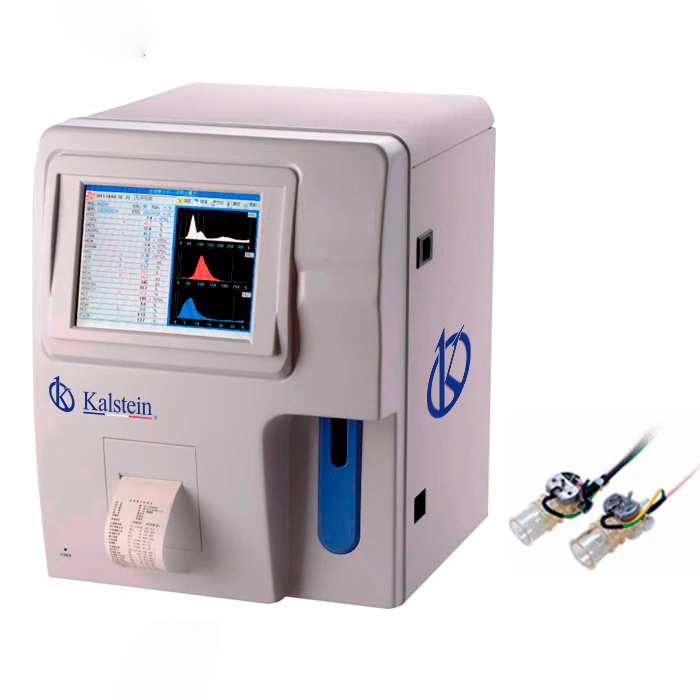Hematology analyzers are equipment used to perform complete blood counts, or blood counts. They do quantitative and qualitative analyzes of the blood elements—red blood cells, white blood cells, and platelets. They are mainly used in medical biology analysis laboratories or in hospitals with hematology services.
What measurement technologies do hematology analyzers use?
Flow cytometry is the most sophisticated and expensive method available today. The cells pass through a narrow tube that is shone by a beam of light. Light hits the cells, and a detection device picks up their reflex. In this case, laser flow cytometry is talked about. There is also fluorescence flow cytometry, which works according to the same principle as laser flow cytometry, except for the type of detection. Flow cytometry is used to analyze the shape of cells and their internal and external structure.
Electrical impedance: This technique is used to determine the number and volume of RBCs and thrombocytes. EDTA blood is diluted with an isotonic solution within the device and aspirated through a capillary orifice. The cells go through one by one an electric voltage field where they induce a pulse — increased electrical resistance — depending on their size. This allows the cells to be counted and the largest cells to be differentiated from the smallest.
Laser diffraction: measures the granulometric distribution of particles. Angular variation of diffuse light intensity is measured when a laser beam passes through a sample of scattered particles. Large particles disperse light at a reduced angle to the laser beam, whereas small particles disperse light at higher angles. In this way, it is possible to calculate the size of the particles that have created the diffraction image.
How can the performance of a hematology analyser be evaluated?
The number of parameters the appliance can supply. That is, all the types of data that the device can provide for the measured elements: for example, the rate of each element, its volume, concentration. Depending on the hematology analyser, from nine to more than 50 parameters can be provided.
The leukocyte differentiation. White blood cells can be divided into three families: lymphocytes, monocytes, and granulocytes. Granulocytes can also be classified into three groups: basophilic granulocytes, eosinophilic granulocytes, and neutrophilic granulocytes.
What are the advantages of a hematology analyser?
Speed, as this is usually an automated analysis process. This reduces or even eliminates the need for manual intervention.
The accuracy of the results and, therefore, a better cellular differentiation.
Versatility, thanks to a range of measuring parameters.
At Kalstein we offer you excellent hematological analysers, which have the best technology. That’s why we invite you to take a look at the “Products” menu. HERE

